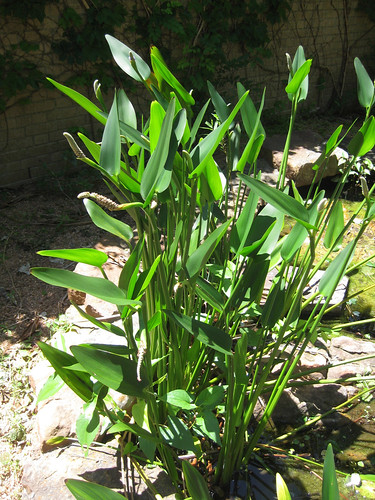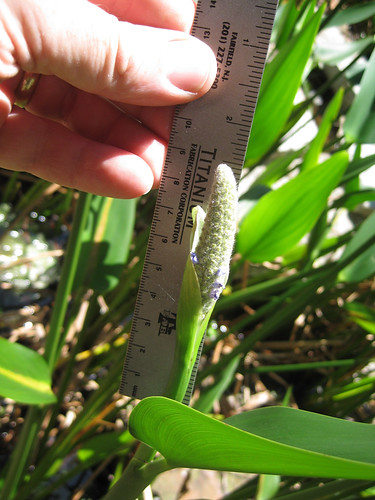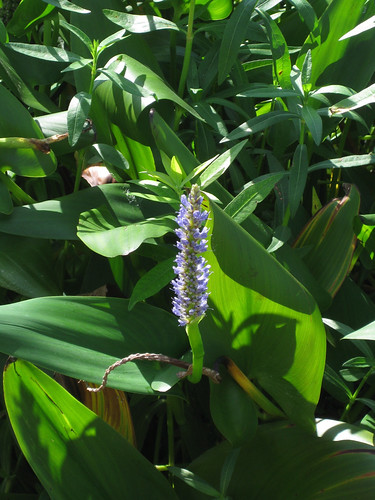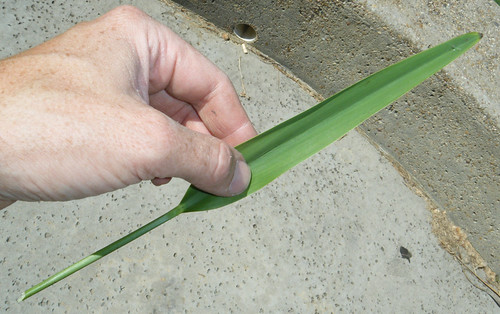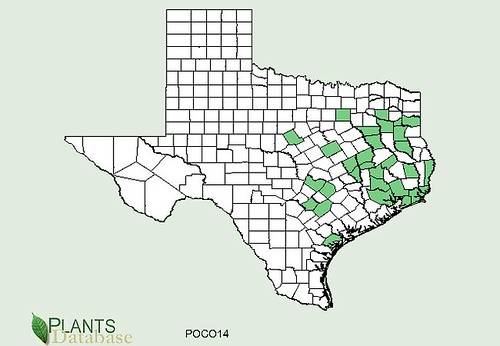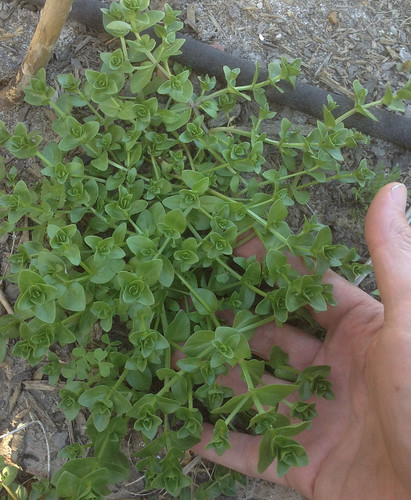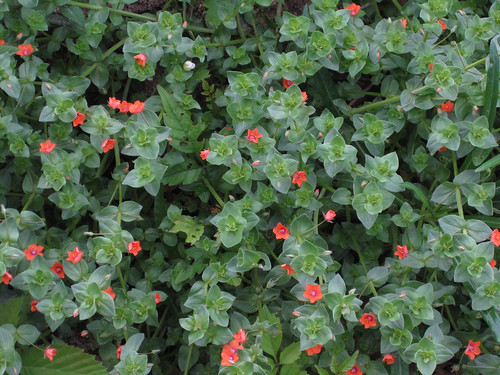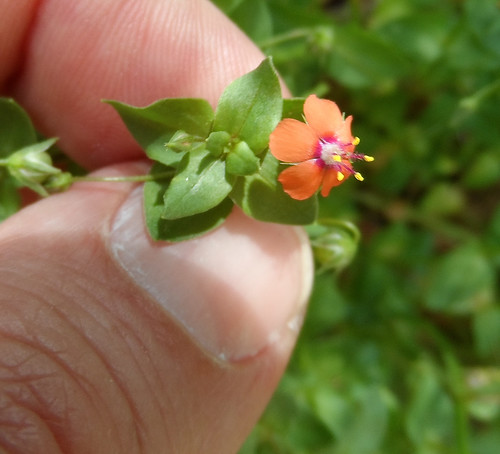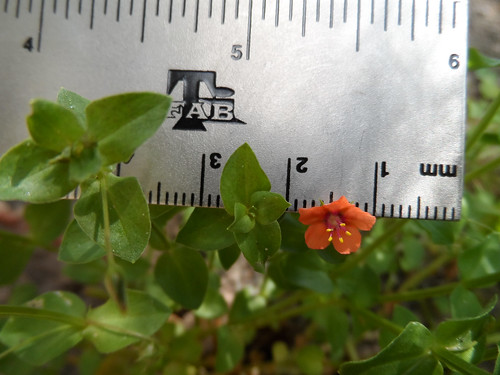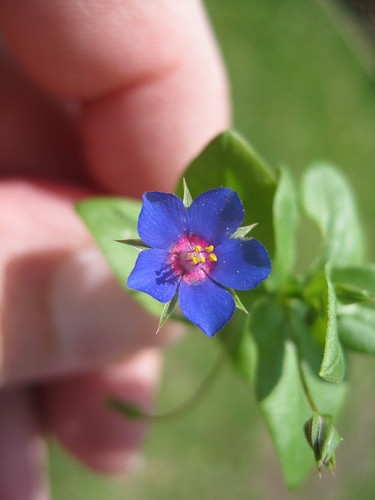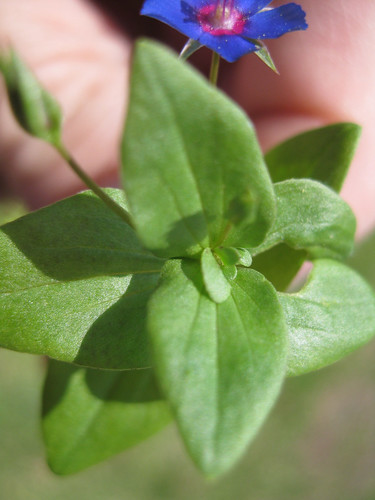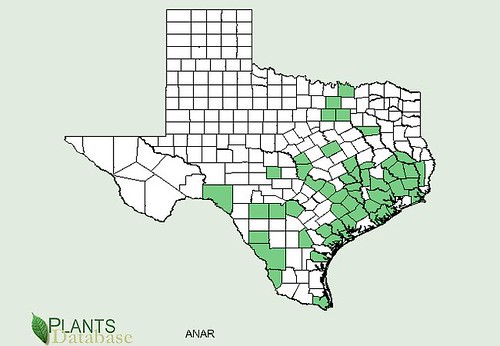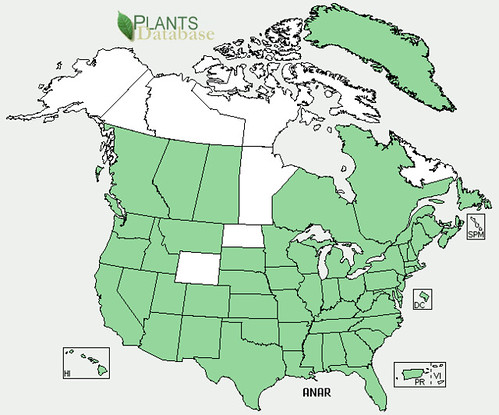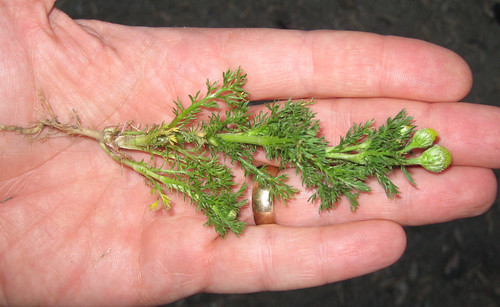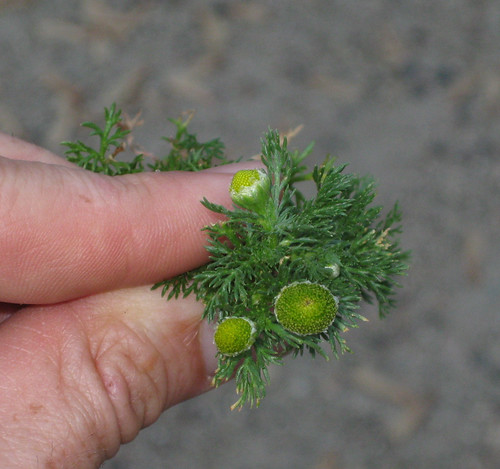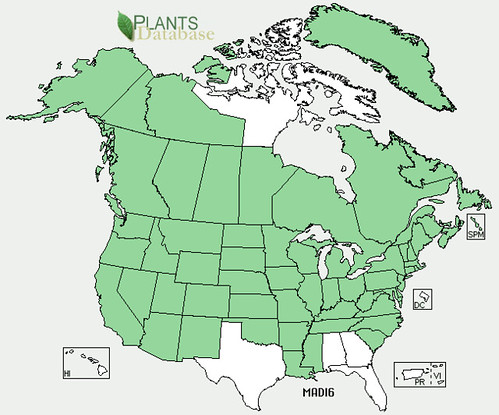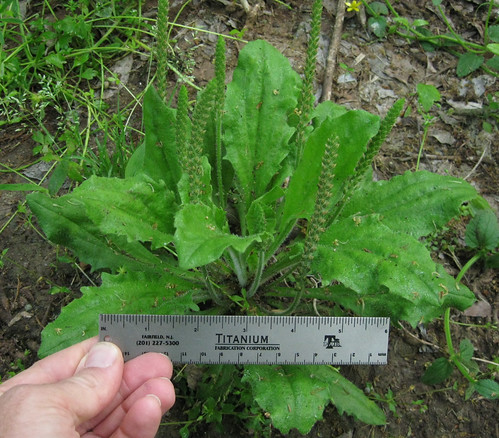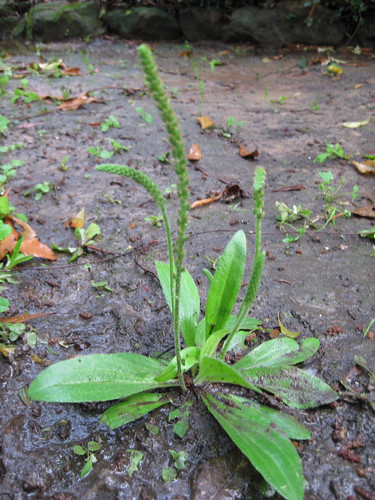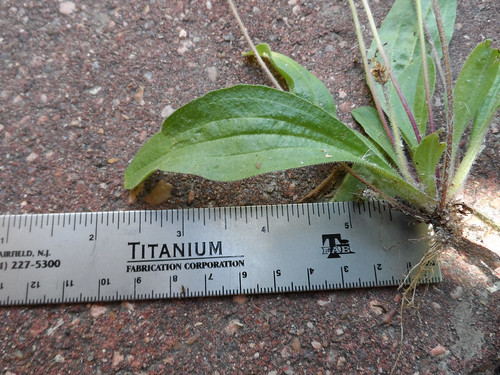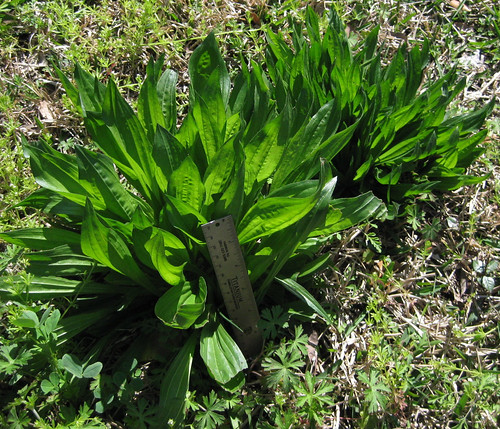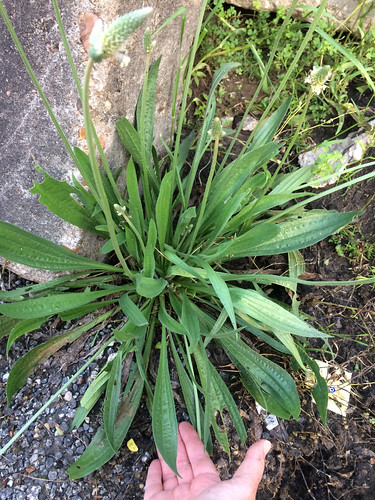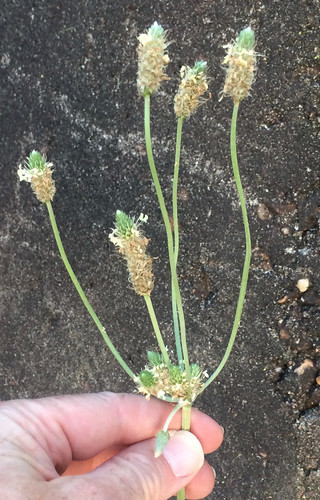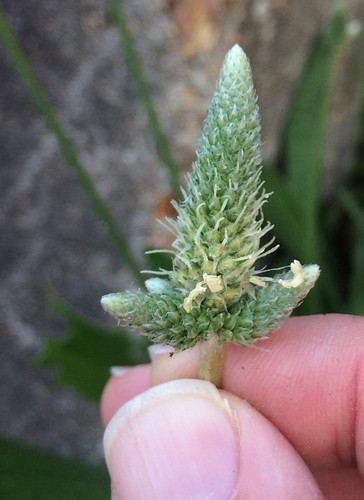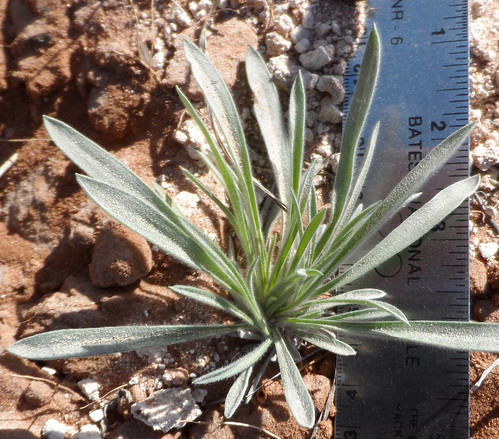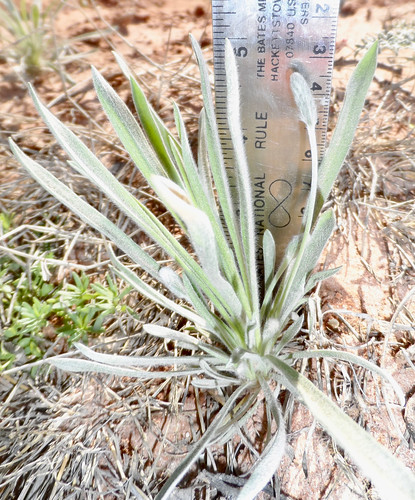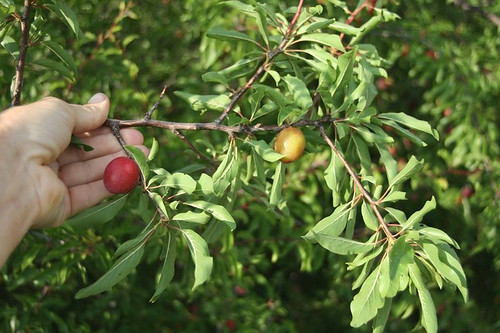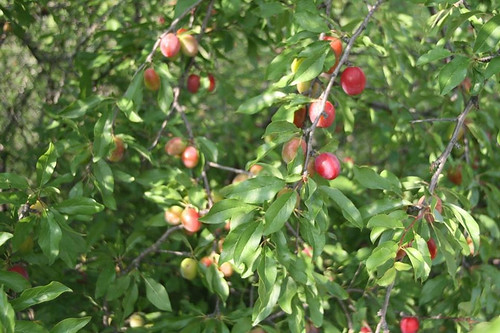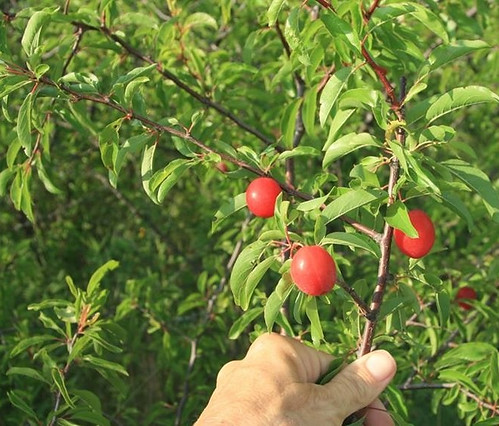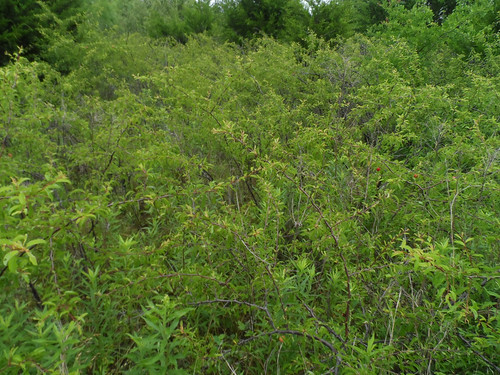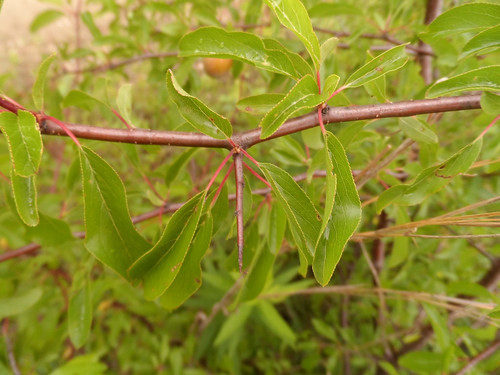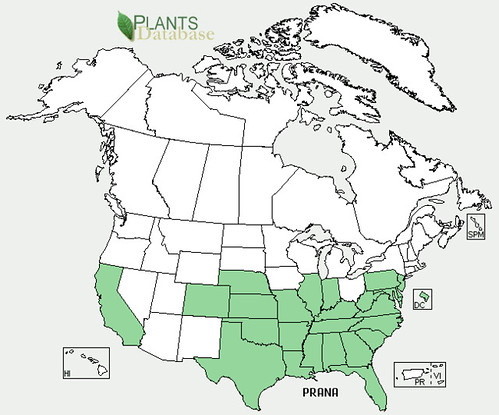Abundance: plentiful
What: fruit, leaves
How: fruit - raw, jams, jelly, candied, tarts; leaves - tea
Where: fields, sunny edges of woods
When: late summer, fall
Nutritional Value: fiber, Vit C, B, minerals, anti-oxidants, flavonoids.

Virginia persimmon fruit is best/sweetest when it is orange in color and the "crown" separates easily from the fruit. In general, only female persimmon trees produce fruit but there are rare occasion when male trees have suddenly produced a few fruit now and then.
Unripe persimmon.
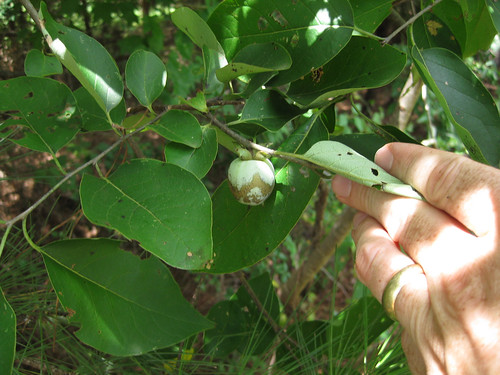
Young persimmon tree. Mature trees can grow 40 to 60 feet tall. The bark is gray to black in color.
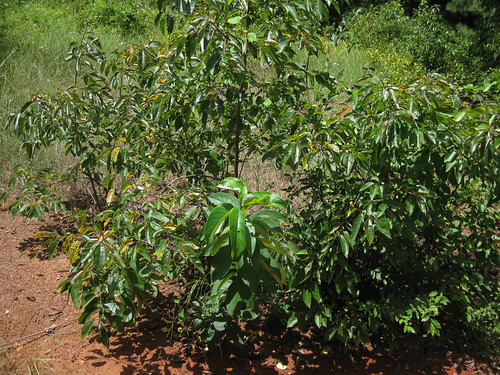
Persimmon leaves are oval, smooth-edged, dark green on top and light green/gray on the bottom.
Unripe fruit. Persimmons contain six flatish seeds.
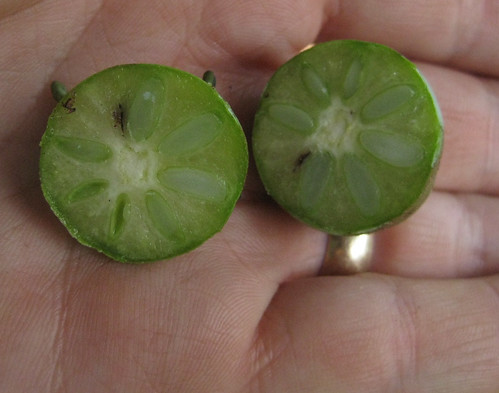
Virginia persimmon in the fall after losing its leaves but still retaining fruit.
Ripe fruit. Note the "crown" where it was attached to the tree.
If the crown separates easily from the fruit it's ready to eat. No frost needed!
Scaly/craggy bark of a mature Virginia persimmon tree.
Raccoons, coyotes, possums, and wild hogs love ripe Virginia persimmons. Finding the seeds in animal poop is a good indication to check your fruit for ripeness. These seeds are approximately 1/2" long.
Texas distribution, attributed to U. S. Department of Agriculture. The marked counties are guidelines only. Plants may appear in other counties, especially if used in landscaping.
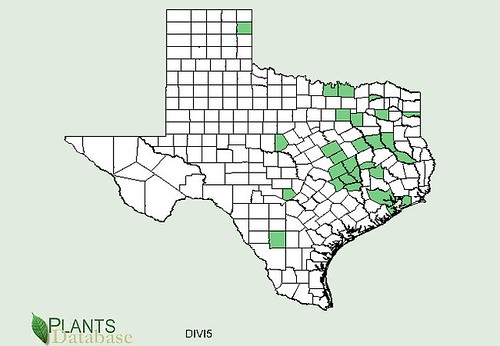
North American distribution, attributed to U. S. Department of Agriculture.

The Virginian Persimmon tree is mainly found in the northern areas of East Texas. The trees usually appear together in great numbers due to the many animals that eat the fruit and spread the seeds...along with a nice dollop of fertilizer. The trees are deciduous, losing their leaves in the fall. Only the females produce the edible fruit and the natural ratio for these trees is one female for every ten males. This means you need to plant a lot of seedlings to insure fruit. No one has yet figured out how to tell if a persimmon tree is male or female until it's started producing flowers...about seven years old. Luckily the seeds are very easy to sprout, resulting in numerous persimmon trees in the same area. Persimmon wood is very dense and hard, much like its relative ebony. It's a bit heavy as a walking stick but dang near indestructible so that's what I use.
Persimmons aren't sweet enough to eat until they are dark orange in color and their crown is easily plucked from the fruit. An unripe persimmon is extremely astringent and will suck all the moisture from your mouth...which is kind of a funny joke to do to someone.
The ripe fruit has a wonderful, sweet flavor. The skins are edible but the body has a hard time digesting them. This can lead to an obstructed bowel if too many fruit are eaten at once.
Buy my book! Outdoor Adventure Guides Foraging covers 70 of North America's tastiest and easy to find wild edibles shown with the same big pictures as here on the Foraging Texas website.










